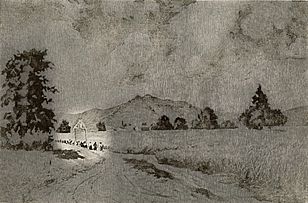Klicken Sie hier, um zu unserer deutschen Version zu gelangen.

The 7th Cologne Art Insurance Talk 2018 in retrospect.
Gurlitt, Stern, Flechtheim - who insures me history? - this was the title of this year's 7th Cologne Art Insurance Talk as part of Art Cologne.
"Who insures history for me?" asked the 7th Cologne Art Insurance Talk. At the invitation of the Cologne art insurance broker Zilkens Fine Art, experts from the insurance industry, art trade and journalism discussed a topic that is increasingly influencing the art trade against the backdrop of current and future legislation in front of around 200 guests at the Art Cologne on Friday, 20 April.
It turned out that the provenance of works of art is not only still, but increasingly, a challenge for the industry and for collectors. Hardly practicable to absurd legal regulations of the EU and Germany partly represent existence-threatening obstacles for the trade and move collectors close to criminality.
"This industry has no lobby," Zilkens explained in his introduction. In addition, differences to the legal system in the USA lead to imponderables. Even forms of property acquisition that were previously believed to be safe are unpredictable as a result, as current cases show.
The trade has been making great efforts to clarify provenance for years. Karin Schulze-Frieling from the Dortmunder Galerie Utermann, who is also on the board of the Bundesverband Deutscher Galerien BVDG (Association of German Galleries), explained the procedure for taking over works of art: First, the authenticity is checked, then the value is determined and a contract is drawn up with the owner that regulates the modalities of the sale. Then the provenance research begins. She pointed out that the trade is even obliged to do this. The 1,000 works that have been discovered so far have all been identified by the trade.
Provenance research routinely involves consulting relevant databases in which looted art and stolen artworks are listed. Amelie Ebbinghaus of Art Loss Register in London reported that in addition to galleries, 110 auction houses now have their company check all lots for provenance starting at low four-digit estimate prices. For this purpose, it uses its own database as well as that of Interpol, and in more difficult cases, other sources such as Lostart and ERR Project in France, as well as auction catalogues from the immediate post-war period. So-called Red Flag Names, numbering in the thousands, automatically triggered more intensive research. Schulze-Frieling criticised the fact that Lostart, for example, had to be used but was open to abuse, since anyone could enter anything there and thus make it non-tradable. The Art Loss Register, on the other hand, wants to know who is accessing its own data in order to avoid misuse and, in the case of positive hits, to prevent the works from disappearing again to be offered somewhere again.
Julia Barbara Ries from Ergo-Kunstversicherung also checks works for provenance and authenticity because she cannot insure such risks. However, she leaves detailed provenance research to specialists. Defective title insurance could possibly cover third-party property claims, either as legal expenses insurance or at least with reimbursement of the purchase price if the claims turn out to be justified. This insurance is offered by a few providers for new purchases in the insurance period with low limits in the private sector as legal protection. Special title insurance from the Anglo-American area went further, for example in the case of restitution of loans.
Author Maurice Philip Remy insists that the Holocaust be dealt with, but pointed out that less than 0.1 of the works examined are actually suspected of being looted. However, he sees the obligation to act mainly on the part of the state. He asked why Jewish victims and their heirs still have to act as supplicants to German museums. The additional funds just approved for provenance research of 6 million euros were ridiculous, he said, considering that researching the 1,500 works in the Gurlitt collection had already cost 3 million euros. At the current rate, it would take 1,000 years to examine all museum holdings.
There are no grounds at all for restitution from private property. Only Article 14 of the Basic Law allows confiscation in the public interest. But nobody wants that, the last person to do so being the Minister of Finance. All initiatives by the legislator were therefore only intended to divert attention from their own failures and to shift responsibility to the trade.
He emphasises that the Gurlitt collection is in fact an accumulation that has accumulated in the family over the course of a century. In his opinion, it should not have left the country at all because of the Cultural Property Protection Act, not even because of the quality, which is mediocre in parts, but because of the history of the collection, which depicts the drama of 19th/20th century German history.
He emphasises that it is a private collection which, regardless of whether it contains looted art or not, should never have been confiscated because it is not subject to restitution.
Ebbinghaus expressed concern that amicable settlements usually work better than court proceedings because there is always a winner and a loser in lawsuits and the proceedings can drag on for decades. Schulze-Frieling demanded that the state should set a good example so that private collectors also feel encouraged to contribute to settlements. Markus H. Stötzel, a lawyer present in the audience who has been representing the heirs of the legendary art dealer Alfred Flechtheim for ten years, also expressed this view. Politics can get involved, but it doesn't have to. There is no legal basis." So far, restitutions by private parties have run on a moral basis. "The legislator should put that on a binding basis," he demands, expressing the general consensus of those involved.













































